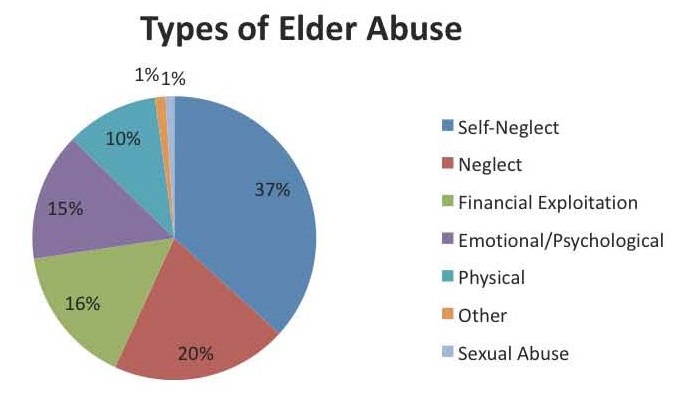What is Adult Protective Services?

An APS caseworker investigating a report of self-neglect
Adult Protective Services is a state-run social services program that ensures the safety and protection of the elderly and adults with disabilities (the National Adult Protective Services Association [NAPSA], n.d.a). It is legally required in all states. Adult Protective Services caseworker are often the first people to see cases of elder abuse and neglect. Adult Protective Services works with health care providers, firefighters, and police to help those with self-neglect (NAPSA, n.d.a).
Each state has its own laws,but regardless of location, all Adult Protective Services agencies share the following basic principles:
- A person has the right to make their own decisions. If of sound mind, the person has the right to refuse treatment even when harm can result;
- Solutions with least restrictions are usually used;
- The family unit is maintained when possible;
- The use of community-based services rather than institutions (e.g., sending the person to a nursing home);
- The avoidance of blame; and
- Inadequate or inappropriate services are worse than no service at all (NAPSA, n.d.b).
 There are APS offices all over the nation for all communities. If you have any issues, concerns or questions, it is always confidential and safe to contact an APS office near you (NAPSA, n.d.a).
There are APS offices all over the nation for all communities. If you have any issues, concerns or questions, it is always confidential and safe to contact an APS office near you (NAPSA, n.d.a).
Why is Adult Protective Services needed?
There are many older adults and individuals with disabilities living in the community, often alone with no outside help. Some of these individuals face abuse, neglect or exploitation by others (NAPSA, n.d.a); this is called abuse or elder abuse in adults older than 65 years. These individuals may also intentionally or unintentionally behave in ways that lead to self-harm, this is called self-neglect. In addition to those being abused, there are others who may simply struggle with even the simplest activities needed for good health. In order to protect and assist these vulnerable individuals, states have created APS agencies. Adult Protective Services intervene when necessary to maintain the safety, health, and independence of this population.
Adult Protective Services and Self-Neglect
Self-neglect is the most common condition handled by APS. In some cases, self-neglect is responsible for 40% and sometimes 50% of all investigations (Arizona Attorney General Mark Brnovich, n.d.).

Types of elder abuse for Cuyahoga County Department of Senior and Adult Services, Ohio in 2013
Adult Protective Services caseworkers are usually the first to investigate reported cases of self-neglect. It requires special social work knowledge to diagnose and intervene in self-neglect. Social workers of various types tend be the professionals most often called in to respond to self-neglect cases. If self-neglect exists, caseworkers develop a service plan.The ultimate goal is to maintain the safety, health and independence of the individual (Rathbone-McCuan, 2014; NAPSA, n.d.a).
Plans may vary, but often include:
- Giving the individuals options on how to keep him/her safe in in their home,
- Connecting the individual with family and community resources,
- Alerting unaware family/friends to help, and
- Offer ways to help caregivers handle stress.
Because self-neglect is a complex problem, each case will have unique circumstances and challenges. For example, APS may help self-neglecting individuals by arranging home services. These home services may be sufficient to keep these individuals in their house. Others may need help with bathing, or pest-control, or meal delivery, or clutter removal, or a combination of these items. In some cases, APS may discover a crisis that requires emergency transport to the hospital.
ReferencesArizona Attorney General Mark Brnovich. (n.d.). Elder abuse information and training guide. Retrieved from https://www.azag.gov/seniors/elder-abuse-information-and-training-guide#9
Cuyahoga County. (2013). Department of senior and adult services. Retrieved October 14, 2015 from http://dsas.cuyahogacounty.us/en-US/adult-protective-services-statistics.aspx
National Adult Protective Services Association. (n. d.a). History: About Adult Protective Services from 1960 to 2000. Retrieved from http://www.napsa-now.org/about-napsa/history/history-of-adult-protective-services/
National Adult Protective Services Association. (n. d.b). Adult abuse and self-neglect. Retrieved from http://www.nasuad.org/documentation/hcbs2011/Presentations/M2RegencyD.pdf
Rathbone-McCuan, E. (2014). An improved approach to treating elder self-neglect: The Self-Care Framework. Generations, 38(3), 80-85.
Last updated: June 7, 2020 at 16:42 pm by
I. M. Abumaria, Doctor of Nursing Practice
Version 2.00